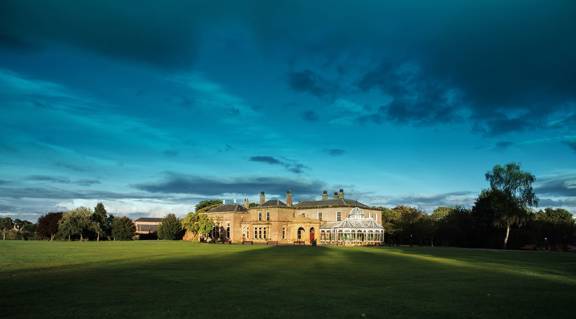Accordion component
Accordions are sections on a page which can be opened and closed to reveal or hide additional information. Multiple accordions can be open at the same time.
There is an option to have an “Open all” and “Close all” function.
Here's how accordions should look as standard
This includes the majority of our sites, including Scottish Enterprise and Find Business Support. They're aligned to the left hand side of the page, with a span of 8. We do this by adding the accordions (as well as a heading and introduction text if relevant) into a container within the panel. Then we apply a span of 8 to the container rather than the panel.
Advanced Manufacturing Innovation District Scotland (AMIDS)
AMIDS is leading the way in collaborative innovation. A net zero campus housing institutes of excellence, major research centres, international manufacturers and business park infrastructure.
AMIDS website opens in a new window
Investment opportunities at AMIDS
National Manufacturing Institute Scotland (NMIS)
Industry-led manufacturing R&D facilities, providing ground-breaking collaborations to transform productivity levels, competitiveness and skills.
Global Open Finance Centre of Excellence (GOFCE) at the University of Edinburgh
This world-first centre has secured £55 million funding to develop financial technology and education to deliver social and economic benefits around the world. This will include how best to use open finance, the sharing of consenting customers' data between different financial businesses.
The university will partner with the Financial Data and Technology Association (FDATA) and FinTech Scotland and draw on expertise from academia, financial services and fintech businesses.
BioHub - Aberdeen
A transformational £40 million BioHub project to double the size of north east Scotland’s high-growth life sciences company cluster has moved into its main construction phase.
Find out more opens in a new window
Digital Health Institute
Defining and designing the digital health and care future for a healthier Scotland.
Find out more opens in a new window
Edinburgh BioQuarter
Edinburgh BioQuarter is already a leading global destination for healthcare delivery, groundbreaking medical research and life sciences innovation and entrepreneurship.
BioQuarter's £1 billion masterplan will create Edinburgh’s Health Innovation District, a new vibrant mixed-use neighbourhood, ultimately supporting a community of more than 20,000 people. A global hub that will become home to healthcare innovators, honoured clinicians and academics, a global top-20 medical school, hospitals and a host of award-winning scientific research institutes.
Here's how accordions should look on SDI
They're centre aligned, but still left justified. This includes a heading and paragraph text if relevant. We do this by adding a span of 8 to the whole panel.
Advanced Manufacturing Innovation District Scotland (AMIDS)
AMIDS is leading the way in collaborative innovation. A net zero campus housing institutes of excellence, major research centres, international manufacturers and business park infrastructure.
AMIDS website opens in a new window
Investment opportunities at AMIDS
National Manufacturing Institute Scotland (NMIS)
Industry-led manufacturing R&D facilities, providing ground-breaking collaborations to transform productivity levels, competitiveness and skills.
Global Open Finance Centre of Excellence (GOFCE) at the University of Edinburgh
This world-first centre has secured £55 million funding to develop financial technology and education to deliver social and economic benefits around the world. This will include how best to use open finance, the sharing of consenting customers' data between different financial businesses.
The university will partner with the Financial Data and Technology Association (FDATA) and FinTech Scotland and draw on expertise from academia, financial services and fintech businesses.
BioHub - Aberdeen
A transformational £40 million BioHub project to double the size of north east Scotland’s high-growth life sciences company cluster has moved into its main construction phase.
Find out more opens in a new window
Digital Health Institute
Defining and designing the digital health and care future for a healthier Scotland.
Find out more opens in a new window
Edinburgh BioQuarter
Edinburgh BioQuarter is already a leading global destination for healthcare delivery, groundbreaking medical research and life sciences innovation and entrepreneurship.
BioQuarter's £1 billion masterplan will create Edinburgh’s Health Innovation District, a new vibrant mixed-use neighbourhood, ultimately supporting a community of more than 20,000 people. A global hub that will become home to healthcare innovators, honoured clinicians and academics, a global top-20 medical school, hospitals and a host of award-winning scientific research institutes.
